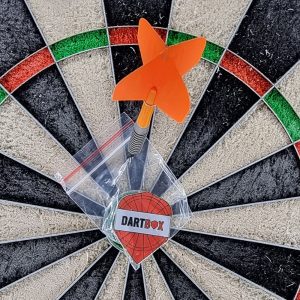Darts is one of the oldest established English pub games which, since the late 1970s, has become one of the most popular sports in the world.
As far as the origins of the game are concerned, javelins, crossbow bolts and archery have all been considered. Of these the most likely scenario is that the game has its roots in archery. Indeed, glance back to the earliest type of dartboards and you will see that these were concentric targets – miniature forms of the archery target. Moreover, darts is most commonly known as ‘arrows.’ Some would say that these two points alone are sufficient to confirm our sports heritage.
Up until the early part of the 20th century, darts existed in disparate forms across parts of England, the only matches taking place being either ‘in-house’ or friendly matches between pubs which were close to each other. (The cost of transport was prohibitive at that time.) However, after World War 1, the first brewery leagues appeared and grew to such an extent that, by 1924, the seeds had been sown for the establishment of a national darts association. The News of the World competition was established in London in the 1927/28 season and by the end of the 1930s had expanded to cover, by region, most of England. The total entrants in the competition in 1938/39 was in excess of 280,000.
Such was the take up of darts by the brewers and the dart-playing public that, by the 1930s, it had become a popular national recreation in England and parts of Wales, played by all classes, often ousting existing pubs games such as skittle and rings (indoor quoits). The development of darts found some resistance in places like parts of Manchester (where the smaller Manchester/ Log-End) board still holds sway.
Darts playing boosted morale in the forces during the Second World War being played in the Officer’s Mess and PoW camps alike. Darts was standard issue in the NAAFI sports pack. American soldiers visiting our shores took darts home with them and generated substantial interest in this ‘olde Englishe’ game in the US which up until then was little played in that country.
The News of the World Individual Darts Championship was revived in 1947/48, this time on a national basis, and continued to be described as ‘the championship every dart player wants to win’ until its demise in the 1990s. The end of the war also saw the return of The People National Team Championships (first played for in 1938/39). However, the original national darts association did not survive the war and although a number of attempts were made to introduce another national, controlling agency, nothing firm was realised until 1954 when The People supported the setting up of the National Darts Association of Great Britain.
The 1950s and 1960s were periods when darts maintained a fairly low profile even though participant levels were still extremely high. The NDAGB was undertaking sterling work both in establishing county leagues and organising top competitions such as the NODOR Fours. The 1960s saw darts on TV for the first time and through the work of the British Darts Organisation (BDO), established in 1973, and the introduction of split screen technology darts really took a hold of Britain and then, it seemed, the rest of the planet.
The 1970s and 1980s witnessed the first darts ‘stars’ such as Eric Bristow, John Lowe, Alan Evans, Jocky Wilson, Leighton Rees, Cliff Lazarenko becoming household names.
The establishment of the Professional Darts Corporation PDC (initially the World Darts Council (WDC)) following the ‘great split’ of 1993 took darts in a new direction. This has resulted in the introduction of key, high profile competitions including the World Matchplay, Grand Prix and the World Championship. The innovative UK Open has proved that the organisation are earnest in their plegde to take the sport to new heights.















